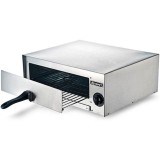Warm White vs. Yellow Light Bulbs: Unlocking the Essentials
When it comes to illuminating your space, the choice between warm white and yellow light bulbs can significantly alter the ambiance of your room. While both options emit a cozy and inviting glow, subtle differences set them apart. This comprehensive guide will shed light on the essential aspects of these two lighting options, empowering you to make an informed decision.
Color Temperature: The Key Distinction
The primary difference between warm white and yellow light bulbs lies in their color temperature, measured in Kelvins (K). Warm white light typically ranges from 2700K to 3000K, emitting a soft and yellowish glow. Yellow light bulbs, on the other hand, have a higher color temperature, usually between 3000K and 4000K, resulting in a brighter and more vibrant yellow hue.
Ambiance and Atmosphere
Warm white light is renowned for creating a warm and welcoming atmosphere, ideal for living rooms, bedrooms, and other cozy spaces. Its yellowish tint evokes a sense of familiarity and relaxation, making it a popular choice for areas where comfort and tranquility are desired. Yellow light bulbs, with their brighter and more energizing glow, are often utilized in kitchens, workspaces, and bathrooms where increased visibility and alertness are beneficial.
Energy Efficiency and Life Expectancy
When considering energy efficiency, both warm white and yellow light bulbs offer comparable performance. LED bulbs, regardless of their color temperature, are the most energy-efficient option, providing significant savings on electricity bills. In terms of life expectancy, LEDs outshine traditional incandescent bulbs, lasting an average of 50,000 hours or more. Yellow light bulbs tend to have a slightly longer lifespan than warm white bulbs due to their lower color temperature, which reduces the likelihood of premature burnout.
Applications and Considerations
Warm white light is frequently used in residential settings, creating a cozy and inviting ambiance in bedrooms, living rooms, and dining areas. Yellow light bulbs are often employed in commercial environments, such as offices, retail stores, and workshops, where enhanced visibility and alertness are required. It's important to consider the specific needs of your space when making a choice, taking into account factors like room size, natural light availability, and desired atmosphere.
Conclusion
The choice between warm white and yellow light bulbs ultimately depends on the desired ambiance and specific application. Warm white light exudes comfort and relaxation, while yellow light bulbs provide enhanced visibility and alertness. Both options offer comparable energy efficiency and lifespans when using LED technology. By understanding the essential differences and considering the needs of your space, you can make an informed decision that enhances the atmosphere and functionality of your environment.
What S The Difference Between Warm White And Cool Leds

White Light Vs Yellow Which Is Better For Eyes When Reading Studying

Should I Choose 2700k Or 3000k Warm White Lighting
Why Does Home Lighting In The Usa And Europe Commonly Have A Yellowish Tint Unlike White Light More Common Other Countries Quora

Color Difference Between Warm White Daylight And Cool Superlightingled Com Blog

Should I Buy White Light Bulbs Or Yellow For My Home Quora

6w Dc 12v 24v Aluminum Heat Sink Led Lamp For Solar Rv 12vmonster Lighting

Lighting Supply Blog A Little Light Reading

Led Light Bulb Color Comparison 2700k 3000k 5000k Side By Demo Warm To Soft Bright White
Why Can I See Better With Light From A White Bulb Than An Orange Yellow One Quora








